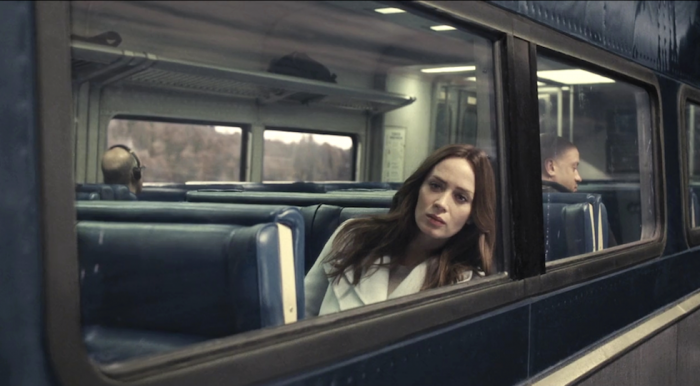I have struggled with addiction for most of my life.
Looking back, I can say with near certainty that it was going to be a part of my life, whether I liked it or not.
When I was 17, I crept in the bushes, looking in the window of an Overeaters Anonymous meeting (literally, I did this) and couldn’t get myself to go in. Everyone there looked sad. No one looked like me. I went back the next month and paced in the hallway, half-listening, thinking I should go in, but I looked so young compared to everyone else.
I had an eating disorder. I knew I needed help, but was far too scared to show my face in there.
After the third month, I went back yet again. I crept through the church hallways, confident that I was going to get the courage to go inside. I was desperate. I needed help. My parents thought I was better, but I was far from it.
My heart was racing, my stomach was at my ankles, but this time I walked inside the room. I sat down and wanted everything in my being to get right back up and leave. After that meeting, I decided that those particular meetings were not for me, and I felt, yet again, that there was no hope for me.
I felt that I would just suffer in silence my entire life. While all my friends were at home studying, hanging out at their after-school activities, I was crying in a church parking lot, lost, scared, and alone.
Not too long after, I found yoga. A coworker looked at me one day and told me I looked like someone who would practice yoga. It caught me by surprise and sparked something inside me.
Yoga? I didn’t even really know exactly what it all entailed. But heck, I could get a 32”on the sit and reach in the gym, so I, at least, had that going for me.
Yoga, still to this day, has been one of the best things to have ever walked into my life. I didn’t know it then, but yoga would eventually become a vehicle to help me through loss and become a tool to help take others through their struggles onto their next steps in life.
Yoga is the 13th step. Not because of a book someone else wrote. Not because yoga has fancy poses. Not because yoga feels good on the physical body. But because yoga is an incubator for your everyday life.
For nearly 20 years, dozens of my students came from the seats of Alcoholics Anonymous (AA). For some, it was not their first rodeo. I realized that on the mat I heard the same thing, over and over again: “This is like the 13th step.” I’ll be honest, I didn’t come from an AA background, so I didn’t understand what that truly meant.
When you come to the mat, how you act and react all come into play. What you avoid. How you feel. How you don’t want to feel. Everything shows its colors during a yoga session.
Don’t believe me? I have taught thousands of hours of classes and practiced equally that much myself. What I have come to discover is that those same moments we avoid in life, we avoid in yoga. When we don’t want to fall, we avoid it. When we are asked to focus when something is difficult, we do what we do in life: distract. The things that we like, the things that are easy for us, we love and want to express. But when it comes to the uncomfortable, the unknown, the confusing, and challenging, we don’t always embrace with open arms.
I am not here to say that we are all liars on the mat. Not at all. My point is this: how you live on the mat in this incubator called a yoga mat is more often than not exactly how you act, react, respond, or see life off of it.
So why not learn to be the observer in a safe space? In a place where there is no judgment. Where you can fall safely and get back up.
This is the number one reason why yoga has changed my life. I used the mat to take baby steps toward my recovery. Toward dealing with the grief and loss of my daughter, and every other challenge, feeling, and uncertainty in my life.
The yoga mat eventually also became a place of celebration.
A place where I could express the best parts of me.
Gain confidence.
Gain self-trust.
Learn to trust the world a little bit more.
Through teaching others my perspective on the poses, I found my voice again and stepped into who I am meant to be.
You and I both may have been born into unfortunate circumstances. An environment that did not give us great odds. When I realized what was going on in my life early on, I recognized the cycle that appeared to be repeating itself. I refused to let it continue. I refused to live this way my entire life.
I made a promise to myself to stop the cycle. I promised myself that I would never lose hope. That there was more to me than this type of life. And more for me than what I had observed up to that point.
Every single day that I stepped onto the yoga mat, it was a reminder to me of this promise. Yoga is about taking action, and the first step is to just step onto the mat.
The next is to breathe or try a pose. Slowly, one breath at a time, one move at a time, one moment at a time, we begin to see the potential of who we could be.
The poses reminded me to take action in life. To step up. To voice up. To not wait for others to fix me. Because it’s not their job. Just like it is not the job of the teacher or another student to perfect the pose. And if you by chance need them, then you must ask for their help.
All this and more, I learned from the yoga mat.
All this and more, I have spent nearly 20 years learning how to apply to my life.
All this and more, I will continue to take with me and share it with others.
All this and more is available to you. You just need to step onto the mat.
Three Poses to Help You Step Into Yoga
1. Devotional Pose
>> Start in a tabletop position, on all fours on your yoga mat.
>> Widen your knees to be wider than your hips and allow your toes to point toward each other.
>> Walk your hands one to two hands lengths forward, widen your fingers, and plant your palms.
>> Exhale completely.
>> Inhale through your nose, and, as you exhale, begin to sit back toward your heels.
>> If you find yourself free-floating, place a bolster or rolled blanket between your legs to rest on. Supporting your belly, chest, and/or head if necessary.
>> Take three long, deep breaths and work to feel your body relax even more.
>> Now try to turn your palms to face up, pressing your thumbs down as you feel your shoulders spread and open up.
>> Remain here for five more breaths, or as long as you would like.
>> Slowly, on an inhale, rise back up.
2. Warrior II
>> Start standing with your feet wide and toes pointing forward in the direction of your eyes.
>> Turn your left toes to point left and your right foot to angle in (so your heel is the furthest point back).
>> Feel all four corners of your feet planted into the ground.
>> Draw your awareness to your hamstrings and work to hug them together.
>> On your next exhale, begin to bend your left knee, and draw it to a place near or over your left ankle.
>> Feel firm and steady in your front leg. Think about your leg like a magnet to the left.
>> Breathing regularly, feel your glutes hug toward the tailbone underneath you.
>> Tip your pelvis into neutral (think belly in).
>> Draw your spine tall, and, instead of pressing your chest out to engage your upper back, keep your front ribs down as you spread your arms to a “T” and activate your back body.
>> Finally, reaching firm through your right fingertips (back arm), work to rotate your head to the left. This is not a tip; this is a true rotation. Lock your eyes out over the tips of your left fingertips.
>> Hold your focus there. No matter what your mind wants you to look at.
>> Warrior II is about the past staying in the past, the future out in front, and you focused. But all the while, you stay in the present. Strong. Powerful. Aware. If you want to change your future, you must start where you are, in the present moment.
>> Inhale to rise up and come out.
>> Repeat the opposite side.
3. Flying Locust
>> Begin by laying on your belly. Legs out long behind you, knees to the floor, big toes pointing straight backward.
>> Let your arms lay by your sides and point your nose to hover over the floor with the back of your neck long.
>> Exhale completely, and now inhale and slowly lift up your head, torso, and arms.
>> Work to keep your pelvis level and grounded and reach your arms backward, rolling your shoulders inward toward the spine.
>> Inhale and lift the legs, reaching long and strong through the tips of your toes. Keep the legs parallel, working not to let the legs roll inward.
>> Exhale and begin to slide your arms outward to “T” position. You should feel your shoulders/upper back engage even more.
>> Gently turn your head to actually look at each arm. Are they at a “T”?
>> Now turn your head back to center.
>> Breathe calmly and deeply for five breaths.
>> Exhale, return to the floor, and take three deep breaths.
>> Variation: Try moving your arms alongside your ears.
>> Try to repeat one to two more times.
When yoga becomes the 13th step for someone who is stepping out of addiction and into life again, it’s not just about the poses. It becomes more about what the poses do for the person practicing. They become a vehicle for the one on the mat. To feel, breathe, and experience what others talk about as the joys of life.
Except for someone like me, I needed it in doses of one breath and one pose at a time. To then go back into my life and practice what I had just newly discovered.
Let yoga teach you how to breathe again, where you once thought it was too overwhelming.
Let yoga teach you how to move again, where you once thought it was too intimidating.
Let yoga teach you how to live again, where you once thought it was not even an option for you.
Together, let’s live life again, and it can start with one breath, one move, one intention on the yoga mat.
 Share on bsky
Share on bsky


Read 0 comments and reply